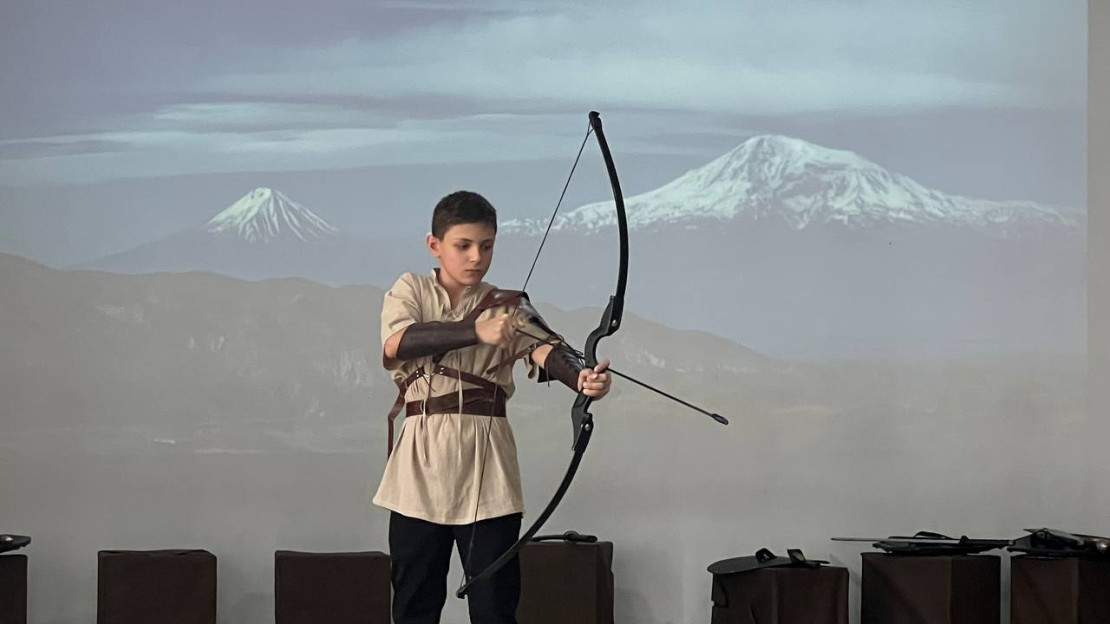
At Usum School, events are numerous and varied. Every year, they are refined, strengthened, and adapted with new scripts and storylines, enriched with additional scenes, and updated to reflect contemporary themes. Yet, among all these events, there is one topic that remains timeless, regardless of the era, students’ age, or level of awareness: the homeland.
As part of the school’s celebration of the 34th anniversary of the Republic of Armenia, today the 7th graders took the stage. To say that the purpose of the performance was merely to promote patriotism would be an understatement. The presentation blended our nation’s historical struggles with contemporary layers of meaning. Drawing from ancestral chronicles and biblical references, the story transported the audience to the time of the Babylonian Tower and the conflict between Hayk and Bel, seamlessly combining the messages of our pagan mythology with the values of Christianity.
The portrayal of Old and New Hayk, the wise figure of Grandmother Siranush symbolizing collective wisdom, and the immortalized character of Movses Khorenatsi carried a clear mission: to show the triumph of freedom over tyranny and the foresight that just actions inevitably lead to success.
Perhaps the most powerful part of the performance was the finale, which brought the audience into the present, reflecting on the “New Armenian” born in the students’ thoughts and the ever-renewing Armenia.
At the end of the event, the school principal, S. Tamaryan, gave a speech of gratitude. She emphasized the students’ understanding that the old and new layers of the homeland’s history must always remain connected, and that this connection should begin forming during school years. “We must also realize that each new day gives us another opportunity to renew ourselves, and we may not have the right to miss that chance,” Tamaryan said, adding that the students’ performances stood out not only for their acting skills but also for their responsibility. “On stage, you were not simply reciting or reenacting scenes—you were fully aware of the message each of your characters carried,” concluded the principal.